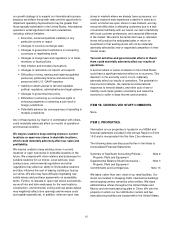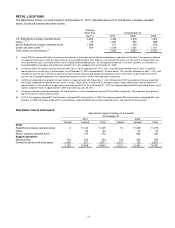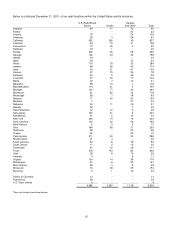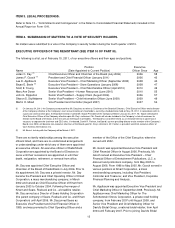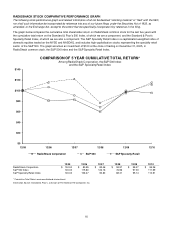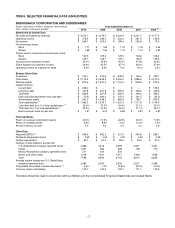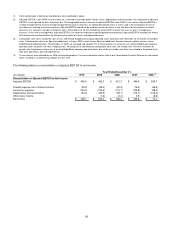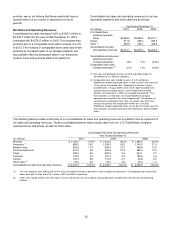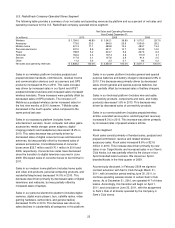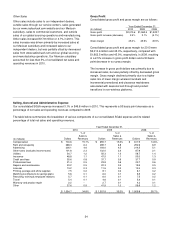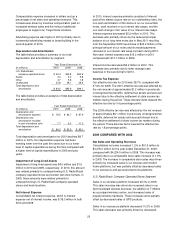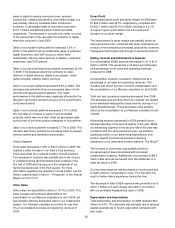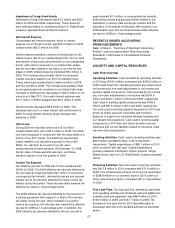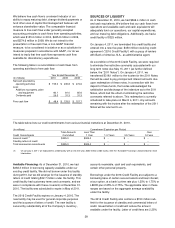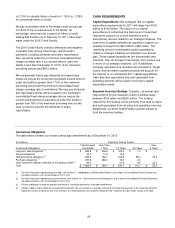Radio Shack 2010 Annual Report Download - page 30
Download and view the complete annual report
Please find page 30 of the 2010 Radio Shack annual report below. You can navigate through the pages in the report by either clicking on the pages listed below, or by using the keyword search tool below to find specific information within the annual report.20
According to the Consumer Electronics Association
(“CEA”), sales of consumer electronics are expected to
remain strong, growing by more than 3% in 2011 to $186.4
billion due to the continued adoption of more portable digital
products. In 2011, the CEA estimates that smartphone
revenues will increase nearly 20% to more than $21 billion.
The innovation in certain mature consumer electronic
product categories, such as DVD players, camcorders and
audio products, has not been sufficient to maintain average
selling prices. These mature products have become
commoditized and have experienced price declines and
reduced margins.
Business Strategy and Performance
Our business strategy is focused around three specific
goals:
• Strengthen our financial position and flexibility
• Improve the quality of our operations, especially
customer service
• Strengthen our product offering and revitalize and
contemporize our brand
By taking a disciplined approach to cost control and
focusing on profitable sales and the strength of our balance
sheet, we have been able to make substantial progress
toward all three goals.
Over the past four years, we improved our margins,
returned excess cash to shareholders through share
repurchases, and controlled our costs. At the same time,
we continued to make operational improvements that
reinforced our strategic themes of mobility, innovation, and
service. In the third quarter of 2009, we added T-Mobile as
a third national wireless carrier to our RadioShack-branded
stores, positioning us to meet our customers’ desire for
multi-carrier options and to develop more aggressively our
position in the wireless market. In addition, we launched our
new brand platform – The Shack® – that began to capture
the attention of consumers and the marketplace.
We have continued to invest in strategic initiatives to drive
our long-term success, including:
• Growing our wireless business by taking advantage
of our multiple wireless carrier retail position, the
strong product growth cycle, and the growth in
penetration of smartphones
• Strengthening the offering in our non-wireless
product platforms by improving our merchandising
talent, transitioning to a more productive product
assortment, adding more national brands, and
increasing exposure of these categories in targeted
advertising and marketing
• Maximizing our dealer and franchise operations by
increasing our wireless offerings through these
channels and developing a consistent brand
experience
• Partnering with other retailers – such as Target – to
provide wireless service offerings in their stores
• Improving our use of real estate and taking
advantage of the current commercial real estate
market by reevaluating our leases for improved
terms or reduced costs
• Developing our international growth opportunities
through our company-owned stores in Mexico
As previously disclosed, in February 2009 we signed a
contract extension with Sam’s Club through March 31,
2011, with a transition period ending June 30, 2011, to
continue operating wireless kiosks in certain Sam’s Club
stores. As of December 31, 2010, we operated 417 of these
kiosks. Accordingly, this transition will begin on April 1,
2011, and conclude on June 30, 2011, with the assignment
to Sam’s Club of all kiosks operated by the Company in
Sam’s Club stores.
In the third quarter of 2010 the Company signed a multi-
year agreement with Target Corporation to operate wireless
kiosks in certain Target stores. In August 2010, we began
to roll out Target Mobile kiosks, with the objective of
operating kiosks in the majority of Target stores nationwide
by mid-2011. As of December 31, 2010, the Company
operated 850 Target Mobile kiosks, and it expects to
operate kiosks in approximately 1,450 Target stores by
June 30, 2011.
Thus, the Sam’s Club transition coincides with the
expansion of our kiosk program with Target. We expect a
decline in kiosks segment operating income -- reflecting the
impact of ramping up the new Target Mobile kiosks and
eliminating the Sam’s Club kiosks -- of approximately $10
million to $15 million in full-year 2011 compared to full-year
2010, with growth in kiosks segment operating income
expected to resume in 2012 following completion of the
Target Mobile kiosk rollout.


